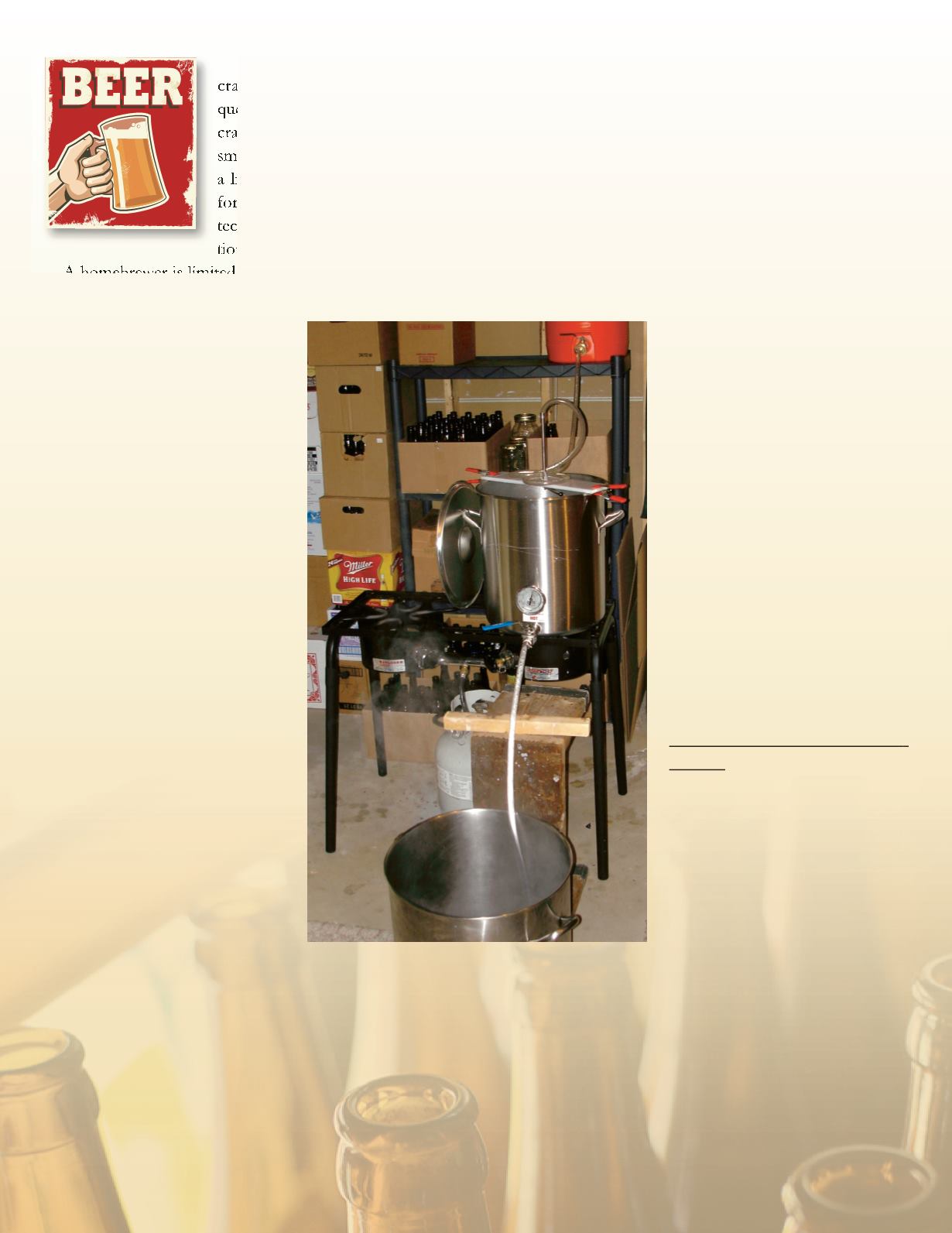
4
What’s the difference between
craft beers and home beers? Good
question. Basically, an independent
craft brewery produces a relatively
small amount of beer that is sold in
a limited market and is recognized
for quality, flavor and brewing
technique. There are some excep-
tions, such as SamAdams.
A homebrewer is limited in quantity produced and cannot
sell the beer. Essentially, it is for
consumptionby family, friends and
other home brew fans.
There are a number of trends in
homebrewing that our Plenco
brewers identified. For one thing,
the Internet hasmade a difference
in promoting the hobby, just as it
has donewithmost aspects of our
lives, and providing access to
homebrewing supplies, recipes, and
new processes, all of which fit
neatly into thewillingness to share
information among the home-
brewing community.
The “sweet and sour” trend
reflects the industry’s focus on
new blends in alcohol and wine.
Why not beer? Homebrewers like
toexperiment, so adding fruit of all
sortsmakes interestingbrews, they
told
PlastiScope21
. “We have been
doing a lot of fruit,” Peter said. “I
made a fivegallonbatch and split it
up five ways to add peach, cherry,
raspberry and other fruit flavors.”
He and particularly his wife find
the new combinations refreshing,
but not as sweet as wine coolers,
some of whichhe saidwere
actually beer.
The sours are trending right now as well, Peter said, with
Flemish reds andOakbrowns alongwith Indiapale ales (IPAs)
leading the way. The IPAs with increased amounts of hops
were created when the British Empire ruled India and
transported beer from England, requiring preservative and
antibacterial benefits of hops andhigh alcohol content.
Does theWisconsin andSheboyganGerman andEuropean
heritagehelpexplainwhyour statehas somanyhomebrewers?
Actually not, in the opinion of Plenco homebrewers. In fact,
somebelieve that our heritagemight actuallybehurting in the
sense that the gigantic breweries founded inWisconsin have
dominated the market for so long and in such massive
percentages of sales that we are late comers. “Colorado,
Washington state, Oregon and even Michigan have more
homebrewers thanWisconsin,”Peter said.
A final homebrewing trend described by Plenco
homebrewers shows pairing between cooking and brewing is
increasing. More frequently, beers
are being matched with food,
similar to the pairing of food and
wine. Peter reported that hemight
“start dinnerwith aPilsner and fin-
ish with a dessert beer.” He said
homebrewers seldom have the
same beer twice during ameal. He
admitted to having seven or eight
different brews inhis refrigerator.
Does this sound like ahobbyyou
might want to take up? It’s not
difficult to start. Peter suggested
youbuy a beer kit online and try it,
or you can really get into the spirit
by raising some of the ingredients
such as hops andusing recipes you
can find at the American Home-
brewers Association Web site,
and elsewhere on the
Internet.
Our resident homebrewing
experts think homebrewing has a
bright future and will continue
growing in the years ahead. More
supplies are available today than
ever before. There are excellent
suppliers of the raw materials
neededbyhomebrewersbecauseof
the increasedmarket demand. The
Internet not only spreads the word about homebrewing
around the world, but provides access to needed materials
available everywhere.
“Peoplewho arehomebrewers and craft brewers help each
otherwith supplies, recipes and advice,”Peter said. “They are
in a sense competitors, but really they aremore likebrethren.”
TomBadura’s basement brewing setup during the “mash
sparge” phasewhen the sweet malted grain sugars are
rinsed into the boil kettle.


